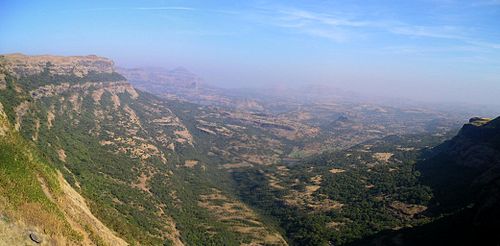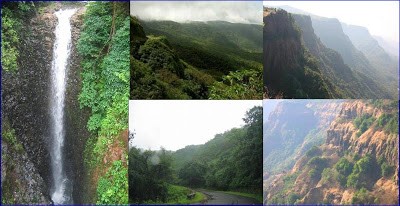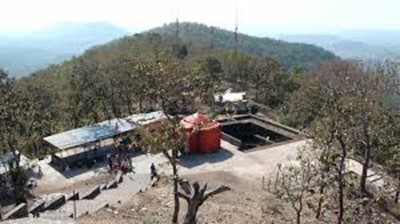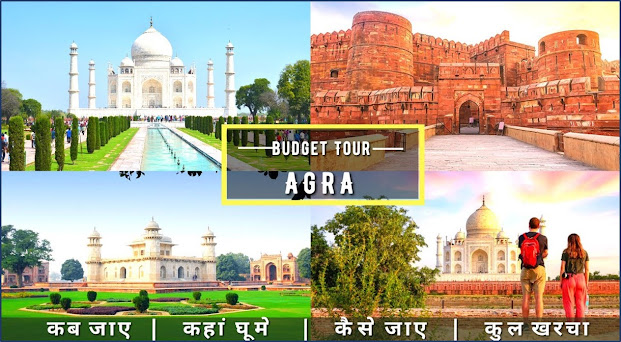The fort is quite old. The remains of a Microlithic man were discovered here. There are numerous references to Harishchandragad in ancient works such as the Matsya Purana, Agni Purana, and Skanda Purana.
Its history begins in the sixth century, during the reign of the Kalachuri dynasty. During this time, the fort was constructed. Several caves could have been carved in the 11th century.
There are statues of King Vishnu in these caves. Despite the names Tamarat and Rohidas, the cliffs have nothing to do with Ayodhya. Changdev (author of the epic Tatvasaar) meditated here frequently in the 14th century.
Most notable places you are interested in
Saptatirtha Pushkarni :-
To the east of the temple is "Saptatirtha," a well-constructed lake. There are temple-like structures on its bank with statues of King Vishnu.
These statues have recently been transformed into caves near the Harishchandreshwar temple.
Many pedestrians face the arduous pain of the place these days, as they dump plastic waste and other items into the lake. Swimming is also an option.
(However, in the summer, the water is so cold that you almost feel like you're standing in the refrigerator compartment.)
Kedareshwar Cave:-
A local legend
says that when the fourth pillar breaks, the earth will end.
A large cave to the right of the Harishchandreshwar temple in Kedareshwar contains a large Shiva Linga that is completely surrounded by water. The water reaches the waist and rises 15 feet [5 m] above the ground.
The water is extremely cold, making access to Shiva Linga difficult. The cave contains sculptures. Getting to the cave during the rainy season is impossible because a large stream flows across the road. This is the Mangalganga River's headwaters.
There is a large rock above Shiva Linga. To support the cave, four pillars were built around Shiva Linga.
Another intriguing feature of this area is that water enters the temple every day through four walls.
And because the water is so cold, it's difficult to get back inside. Water flows continuously throughout the year. During the rainy season, the water level in the cave is nearly at its maximum.
Kokankada:-
several times. From this point, a round rainbow (Broken spectre phenomenon) can be seen on occasion.
It is only visible when there is a slight fog in the valley and the sun is behind the person viewing it.
A vertical cloud mass is a phenomenon that can be seen in this area, in which clouds near a cliff enter a hole that falls below and are thrown into the sky at a distance of more than 15 metres, creating the image of a wall rising straight at the edge of the cliff without entering the earth's surface.
If you visit in April or May, throw your panama hat on the cliff and enjoy a hike up and back to the plains.
The height of the Tamarati:-
Tamaranchi is another name for Tamaranchi. This is the castle's highest point (1429 meters). Leopards have been spotted in the forest above the summit. We can see the entire Naneghat range and the castles near Murbad from here.
We can see forts as far south as Siddhagad near Bhimashankar and the twin mountains of Napta, Ghodishep (865 metres), Ajoba (1375 metres), and Kulang fort (1471 metres) in the north near Kasara district from Tamarati.
Caves in Harishchandragad:-
The caves are scattered throughout the castle. Many of these are habitable and are located beneath the upper level of the Tamarati.
Some are near the temple, others near the castle, and still others deep in the woods. The natural cave is located deep on the northwest side of the castle, to the right of Kokan Kada.
Many other caves have gone missing, according to reports.
Nageshwar Temple near Khireshwar
This is a beautiful ancient architecture with various works of art on display. Some carved objects can be found on the temple's roof.
The most impressive inscription is a 1.5-meter-long statue of King Vishnu in the dormitory, known as "Sheshshayi Vishnu" in Marathi.
It is extremely rare and thus extremely valuable. There are numerous legends surrounding this image. Near the temple, there are caves.
Ganapati, Harishchandreshwar
Temple:-
This temple is an excellent example of ancient Indian carving. It stands 16 metres tall from the ground.
A number of ancient caves and water tanks are located near this temple. The Mangal Ganga River is said to have originated in one of the temple's tanks.
The temple's surface is similar to temple construction in northern India. The same temple can be found in Buddha-Gaya.
Many cemeteries can be seen here, with the general construction visible. These are made of carefully placed stones that are finished on top of one another. Near the temple, there are three large caves. Drinking water is obtained from wells near the temple.
Kashitirtha, another nearby temple, is also worth a visit. This temple's allure is enhanced by the fact that it is engraved on a single large rock.
Doors are available on both sides. Face sculptures flank the main entrance. This is the expression of the temple guards. An inscription by Devsnagsri about Saint Changdev can be found to the left of the door.
How to Reach There:-
Harishchandragad lies at the confluence of the Thane, Pune, and Ahmednagar regions.
1) Thane District: One has to
take a bus to Nagar from Kalyan and get off at 'Khubi Phata'. From there we
reach Khireshwar village by bus or private car. The city is about four miles [7
km] from the fortress.
2) From the Pune District: A daily bus runs from Shivajinagar ST stand in Pune to Khireshwar village.
3) From the Ahmednagar region:
One has to take a bus to Nashik or Mumbai and descend to the village of Ghoti.
From Ghoti, we have to catch
another bus to Sangamner via Malegaon & land in the Rajur area. From here,
2 routes turn the castle.
1) From Rajur, one has to take a
bus or a private car to the village of Pachanai. From here, the trail goes
straight to the highest point.
2) Recently, the road from Rajur
to Tolar Khind has been made available. The temple is about 2-3 hours on foot
from Tolar Khind (Tolar valley).
3) from kotul to kothale bus bus
services are available tolar khind every hour bus to kothale, private cars are
also available on this route.
You Also Read:
1. MAHARASHTRA FORT INFORMATION
2.Shivaji Raje Fort In Maharashtra
3. Ujjain Tourist Places-उज्जैन महाकाल
FAQ:
How do you reach Harishchandra
gad?
What is the history of Harishchandra
gad?
हरिश्चंद्रगड
कुठे आहे ?
हरिश्चंद्रगड विषयी माहिती?































